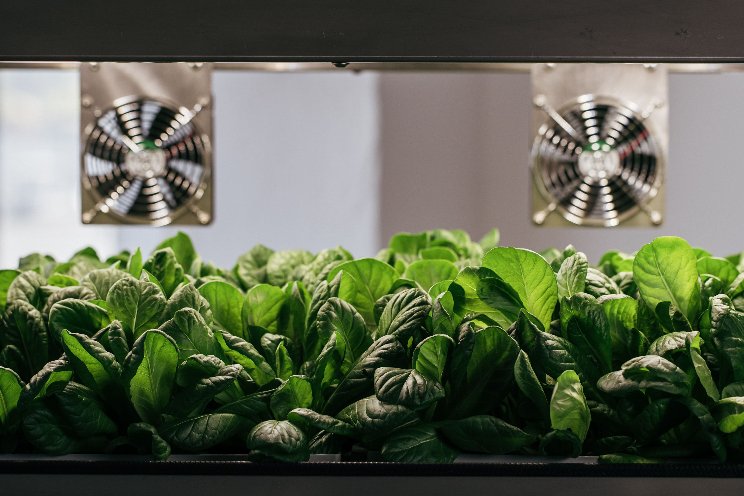7 insights on how dynamic climate conditions affect indoor farm automation
Added on 15 November 2024

Building on the Future of Breeding developments for Indoor Farming
In last week’s post, we explored a critical question: Should breeding programs for indoor farming focus on developing crops specifically adapted to indoor conditions. This week we look into whether we should focus on dynamically adjusting the environment in indoor farming to suit traditional crops? This new study offers valuable insights into that ongoing debate.
The dynamic nature of indoor farming systems, as highlighted in the paper, suggests that the future of farming might not require an either-or approach but a combination of both. By developing crops bred for efficiency in controlled environments—such as varieties with improved photosynthetic efficiency—we can maximize the benefits of these systems. At the same time, the ability to dynamically adjust environmental factors, such as light and temperature, can allow traditional crops to thrive under varying conditions without needing complete genetic redesign.
This dual approach could shape a new frontier for indoor farming, where the precision of dynamic environmental controls complements the innovations of crop breeding. It opens the door for breeding programs to advance while also making it possible for growers to take advantage of traditional crops that are adaptable to flexible, real-time environmental changes. This synergy between dynamic systems and optimized plant breeding may provide the best of both worlds, allowing for more resilient and productive indoor farming environments.
Key Insights:
1. Why Static Conditions Aren’t Enough:
-
Traditional indoor farming systems provide stable, controlled environments to grow crops, but this research suggests that maintaining fixed conditions might not be the best way forward. As plant physiology changes throughout the day and electricity prices fluctuate adjusting environmental factors in real-time can be much more efficient.
-
The study suggests moving towards dynamic systems that adjust environmental factors like light intensity and CO2 concentration based on external conditions such as electricity prices, without impacting plant growth. For example, lowering light intensity when prices spike can save costs while still ensuring healthy plant development.
2. Cutting Energy Costs Without Sacrificing Yields:
-
Lighting is one of the biggest expenses for indoor farming, accounting for up to 60- 85% of electricity use. The good news? This research shows that by dynamically adjusting light intensity based on the fluctuations in electricity prices, indoor farms can reduce their electricity costs by up to 12%, all while maintaining the same level of photosynthetic activity.
-
The researchers modelled dynamic lighting scenarios, optimizing light levels to respond to electricity prices without reducing overall carbon gain. This kind of precision in energy use shows how a smart system can help operators navigate volatile electricity costs.
3. Understanding Plant Physiology in a Dynamic Environment:
-
Plant growth isn’t a linear process, and plants don’t respond to static conditions in the same way throughout the day. For instance, light use efficiency is highest during the first half of the photoperiod, meaning that adjusting light intensity during this period can maximize photosynthesis and growth.
-
The study found that diurnal patterns of light intensity (adjusting the light over the course of the day) not only save energy but can also encourage plants to grow more efficiently. Flexible lighting strategies allow plants to perform well under changing conditions without compromising their growth potential.
4. Breeding for Indoor Farming: A Critical Need:
-
The study emphasizes the need for breeding programs specifically tailored to indoor farming environments. Right now, most crops are bred for outdoor conditions. However, indoor farming offers stable, controlled environments where breeders can focus on developing plants that thrive under constant and optimized conditions.
-
Future breeding programs could focus on traits like higher photosynthetic efficiency in low-light conditions, enhanced water and nutrient use efficiency, and tolerance to frequent environmental changes.
5. Enhancing Product Quality Through Dynamic Control:
-
Dynamic environmental control doesn’t just improve efficiency—it can also enhance product quality. By adjusting factors like light spectrum and temperature towards the end of a crop's growth cycle, farmers can increase the concentration of beneficial compounds, such as antioxidants, in leafy greens. This boosts not only nutritional value but also shelf life.
-
The study highlights the potential of "end-of-production" treatments, which involve tailoring the environment in the final growth stages to maximize both yield and quality, without compromising growth.
6. The Role of Real-Time Sensors and Automation:
-
To make dynamic systems work, continuous monitoring is key. The researchers emphasize the importance of integrating advanced sensors into indoor farming systems to provide real-time data on plant health, growth, and environmental conditions.
-
These sensors like RGB cameras, thermal imaging, and CO2 monitors feed data into crop models that help optimize environmental setpoints for light, temperature, and humidity in real-time. This data-driven approach ensures that resources are used more efficiently, improving both crop quality and overall farm performance.
7. Challenges and the Road Ahead:
-
While the potential for dynamic control in indoor farming is huge, there are challenges to overcome. Scaling up these systems for larger farms will require more affordable and accessible sensor technologies and further experimentation on how dynamic environments affect entire canopies over long production cycles.
-
The research calls for further testing, especially on integrating real-time data into decision-making systems to make large-scale dynamic indoor farms commercially viable.
Click here for more information.
More news















